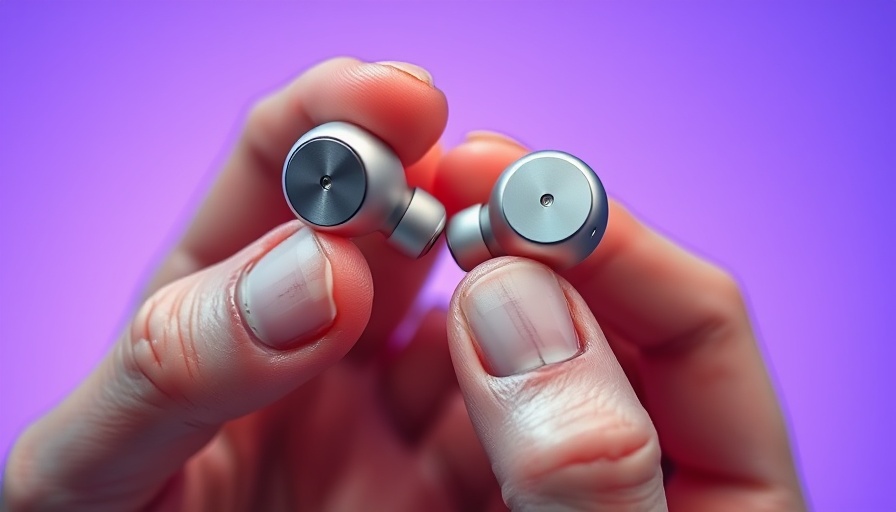
The Paradox of Android Tablets: An Exploration of Their Limitations
The rapid evolution of technology has led to the proliferation of devices designed to fit every user's needs. However, amidst the plethora of options, there remains a curious conundrum: the Android tablet problem. Even as manufacturers develop powerful tablets like the OnePlus Pad 3, the question arises—who actually needs one? This device and its competitors land in a tricky spot between smartphones and computers, leaving many consumers scratching their heads.
The video 'The Android Tablet Problem' presents a comprehensive view of the limitations facing modern tablets, prompting us to analyze their relevance in today's tech landscape.
Finding a Unique Value Proposition
One of the critical issues with tablets is the lack of a clear value proposition that distinguishes them from smartphones and computers. Despite being equipped with impressive specifications—like the OnePlus Pad 3's Snapdragon 8 Elite chip and 12,140 mAh battery—many potential buyers wonder why they would need a tablet at all. The OnePlus Pad offers great hardware, boasting features such as a sleek design, ultra-responsive display, and long battery life, but without compelling apps or functionalities unique to tablets, it risks being seen as excess.
Historical Context: The Rise and Fall of Tablets
To understand the Android tablet issue, we can look back at the historical trajectory of tablet technology. When Apple first introduced the iPad in 2010, it captured the public's imagination, creating a new market segment. However, as the novelty wore off, it became clear that most consumers were content using smartphones for light tasks and computers for heavier ones. Android tablet manufacturers, scrambling to compete, have struggled to create an ecosystem that supports compelling, dedicated tablet apps. As a result, many apps available are simply resized versions of their smartphone counterparts, making the tablet experience feel diluted compared to other devices.
Current App Ecosystem: The Need for Innovation
Both Android and iPad users often express disappointment in the limited number of high-quality, unique tablet apps. The fact that major platforms often overlook tablet-optimized applications is a significant hurdle that manufacturers must address. Developers are prioritizing smartphones, leaving users with mundane, barely-altered apps that fail to maximize the tablet's capabilities. Until we see a shift in app development prioritizing the unique features of tablets, they will struggle to capture mainstream attention, despite being powerful devices.
Would You Buy a Tablet? The Average User's Perspective
Picture yourself standing in an electronics store, contemplating the purchase of a tablet. What are your intentions? Are you looking to have a larger screen for browsing or a portable device for work tasks? Many potential tablet buyers have a narrow use case—casual web browsing, reacting to social media, or watching streaming content. While the OnePlus Pad 3 can easily handle these functions, the average consumer might not see distinct advantages over their smartphone, leading to a reluctance to invest in such an expensive gadget.
Future Predictions: The Evolution of Tablets
So, what does the future hold for Android tablets in a competitive tech marketplace? To reposition these devices, manufacturers need to innovate swiftly. This could mean investing in specialized apps or integrating functionality that makes tablets indispensable for everyday use beyond entertainment. Imagine if a tablet could seamlessly integrate into your smart home ecosystem, allowing you to control all your devices from one interface. Until that vision becomes reality, the Android tablet problem will remain a significant obstacle to mainstream adoption.
A Thought-Provoking Observation: Consumer Behavior in Technology
The core of the Android tablet problem lies in our evolving relationship with technology. As consumers, we must be discerning about what devices we integrate into our lives. Is there room for tablets in an already crowded tech landscape? For many people, the answer may lean towards no, as they find all their needs met with existing smartphones and computers. The tech industry must adapt by not merely focusing on developing new products but also reshaping how we understand the capabilities of those products.
Concluding Observations: Beyond the Tech
As we continue to scrutinize the utility of tablets in our digital lives, conversations around their merits will become increasingly relevant. The OnePlus Pad 3 may boast technical excellence, but its sale will depend on the industry acknowledging the underlying problem of demand versus functionality. If tablets are to thrive, we need compelling reasons for everyday consumers to embrace them as essential parts of their tech repertoire. What do you think? If you own a tablet, how do you use it, and if you don't, would you consider getting one? We would love to hear your thoughts!
 Add Row
Add Row  Add
Add 




 Add Row
Add Row  Add
Add 
Write A Comment